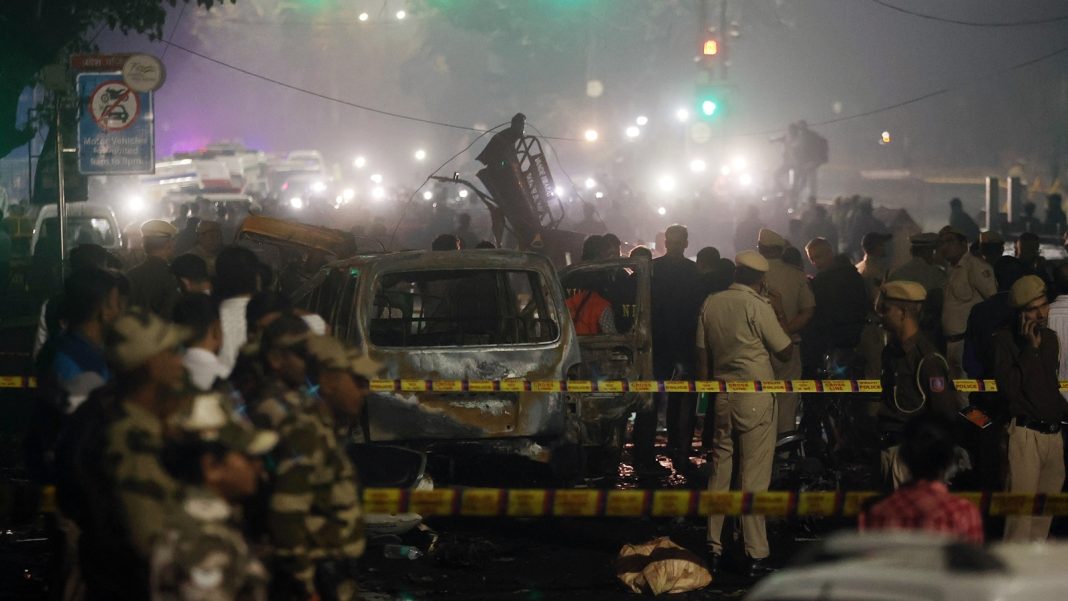The recent investigation into the Red Fort blast module has intensified, with Indian security agencies, led by the National Investigation Agency (NIA), broadening their probe into the alleged terror network. This multi-faceted operation is meticulously examining financial transactions, scrutinizing digital communications, particularly on platforms like Telegram, and delving deeper into the potential involvement of foreign handlers. The coordinated effort underscores a determined push to dismantle the module and neutralize any looming threats.
Unraveling the Network: Financial Trails and Digital Footprints
A crucial aspect of the ongoing investigation involves the freezing of bank accounts linked to suspected members of the module. This strategic move aims to choke off financial lifelines, disrupt operational funding, and uncover the broader monetary ecosystem supporting the alleged terror activities. By meticulously tracing these financial trails, investigators hope to identify not only the direct beneficiaries but also the sources of funding, which often involve complex layering and hawala networks designed to obscure their origins.
Parallel to the financial scrutiny, digital forensics forms another cornerstone of the probe. Agencies are reportedly delving deep into Telegram chats and other encrypted communication channels used by the suspects. Telegram, known for its strong encryption features, has increasingly become a preferred platform for terror groups due to the perceived anonymity it offers. However, investigators are employing advanced techniques to extract crucial metadata, decipher messages, and map communication patterns. This includes analyzing call data records, IP addresses, and digital footprints across various social media platforms, all of which contribute to building a comprehensive picture of the module’s internal communications and external outreach.
“The digital realm leaves indelible marks, even with encryption,” stated a senior investigating official on condition of anonymity. “While challenging, our focus is on piecing together communication flows, identifying command structures, and understanding the ideological dissemination that often precedes such acts.” The interlinking of financial data with digital interactions is proving vital in connecting seemingly disparate elements of the network, revealing how funds are solicited, transferred, and utilized based on digital directives.
The Shadow of Foreign Handlers: A Complex Challenge
Perhaps the most concerning dimension of the investigation is the emerging role of ‘foreign handlers.’ Intelligence agencies are rigorously pursuing leads suggesting external guidance, ideological indoctrination, and possibly even logistical and financial backing from entities operating beyond India’s borders. The involvement of foreign elements introduces a significant layer of complexity, demanding international cooperation and sophisticated intelligence gathering to trace their influence and operational methodologies.
Investigators are exploring how these foreign handlers might have radicalized individuals within the module, provided operational instructions, or channeled funds and resources. This often involves intricate web of contacts, proxy servers, and encrypted channels, making identification and attribution a painstaking process. The presence of such handlers not only escalates the potential threat but also highlights the transnational nature of contemporary terrorism, where local modules can be remotely controlled or inspired by external actors.
Understanding the exact nature of their involvement – whether it’s primarily ideological motivation, strategic planning, or direct tactical support – is critical for pre-empting future threats and formulating robust counter-terrorism strategies. The probe is examining the origin of these foreign links, scrutinizing potential geographical hubs, and analyzing the modus operandi used to establish contact and maintain communication with the module members in India.
Multi-Agency Coordination and Future Implications
The investigation into the Red Fort blast module is a testament to the collaborative efforts of multiple Indian security and intelligence agencies. The NIA, with its specialized mandate to investigate terror-related crimes, is working closely with state police forces and other intelligence wings to consolidate information, conduct arrests, and gather forensic evidence. This coordinated approach is essential for a thorough and efficient probe, ensuring that no stone is left unturned in unraveling the entire conspiracy.
As the investigation progresses, the focus remains on not just apprehending the perpetrators but also on dismantling the entire support structure, including the financial and digital networks, and neutralizing the influence of foreign handlers. The findings from this probe will have significant implications for India’s national security framework, potentially leading to enhanced surveillance mechanisms, more stringent financial transaction monitoring, and improved international intelligence-sharing protocols to counter evolving terror threats.
The Red Fort blast module investigation underscores the dynamic and insidious nature of modern terrorism, where digital anonymity and foreign manipulation converge to pose complex challenges. The determined efforts of Indian agencies to dissect these layers are crucial for safeguarding national security and ensuring justice.




